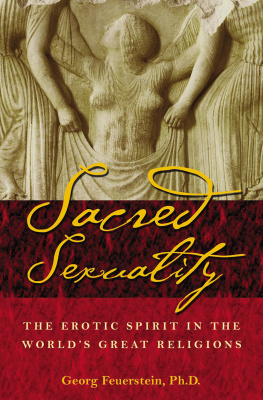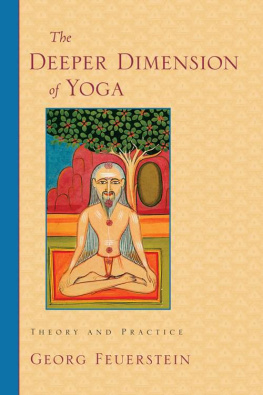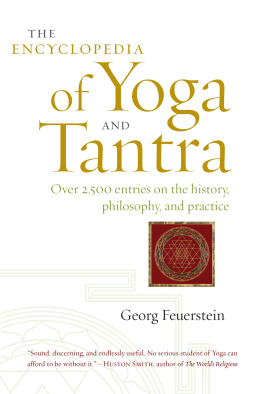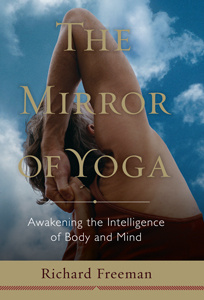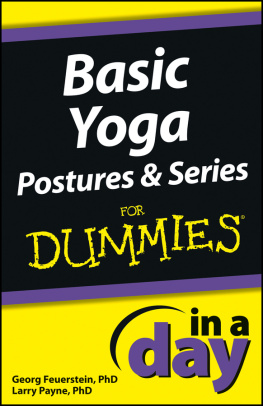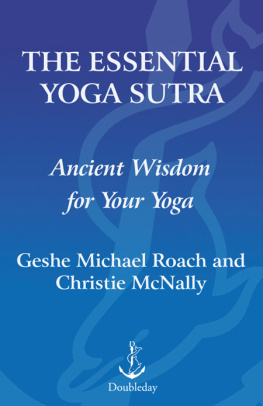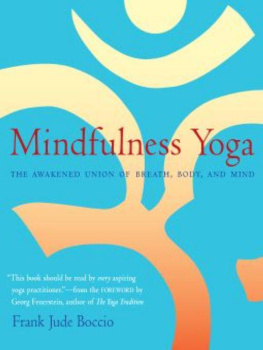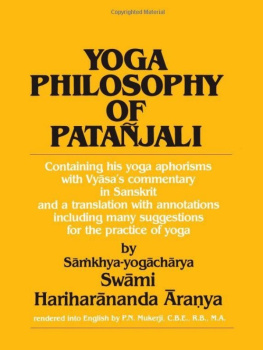
GEORG FEUERSTEIN

Inner Traditions International
Rochester, Vermont
Foreword
by Professor Corrado Pensa
The study of oriental philosophical-religious texts, especially of the Indian genre, presents considerable and particular difficulties. In many instances there is a lack of adequate historical and chronological data, and frequently all that remains are the name of the author and a few vague and more or less legendary reports about him. Furthermore, the terms which confront one are so polyvalent and stratified as to constitute often a very real challenge to anyone who seeks to gauge their full meaning.
In the face of all these difficulties it is of primary importance to develop a valid methodology in order to determine the parameters necessary for the most correct interpretation of eastern texts. It gives me, therefore, great pleasure to preface this book by Georg Feuerstein, who has been researching into Yoga for many years with investigative passion and has already given us several works of capital importance for the comprehension of this subject. His previous books A Reappraisal of Yoga, The Essence of Yoga and Textbook of Yoga testify to an increasing appreciation of Yoga, which is considered each time from a different angle, always enriching our understanding of this phenomenon.
In his methodology Feuerstein adopts an approach to research in which accurate linguistic analysis is inseparable from the analysis of the various contexts in which a given term or concept appears, thus ensuring that all possible meaning values are identified. This particular question has been treated in some depth in the companion volume to the present work entitled Yoga-Stra: An Exercise in the Methodology of Textual Analysis.
The central premise of this methodology is the rejection of all simplistic unilateral interpretations. For this reason Feuerstein also correctly criticises in the aforementioned work E. Conzes reduction of Yoga to a mere assemblage of techniques, whereas what we are in fact dealing with is a theory-practice continuum. Hence, again, his refusal to blindly trust the interpretational keys proffered in the exegetical Sanskrit literature postdating the Yoga-Stra; as he points out there is a considerable intervening chronological and ideological distance. Although taking due note of the commentaries, Feuerstein prefers to concentrate on an immanent critique of the original text itself.
In contrast to the approach adopted by many Orientalists who a priori tend to deny the unity of the text under examination, fragmenting it into so many parts or heterogeneous strata until nothing remains, Feuerstein rightly asks in his methodological study whether this compulsive search for incongruencies and textual corruptions is not the expression of an ethnocentric rationalising mentality which inclines to project everywhere its own need for abstract and absolute logic, and hence is particularly prone to misinterpret paradoxical expressions so common in eastern thought, which has a penchant for transcending dualism and therefore in part also rational language as such.
The principal merit of the present volume lies in that it provides us with a highly original overall picture of Classical Yoga. Instead of giving a contracted description of this school of thought which would be at least partly second-hand Feuerstein undertakes a thorough analysis of the key concepts, arranging his findings in a systematic fashion so that in the end there spontaneously emerges a complete picture of the entire spiritual iter of Classical Yoga. His detailed semantic examination demonstrates once again if that should still be necessary that the meaning of the complex and polyvalent Sanskrit terms (hardly ever translatable into our languages by a single word) must be sought through an accurate comparison of the various contexts in which they occur.
The other great merit of this work is that it never loses sight of the psycho-integrative and experiential matrix of a great many key concepts of Classical Yoga. Thus vara, considered by a number of Orientalists as a later superfluous interpolation added from the outside to a system already complete in itself, is here linked up with the yogins profound experience of the archetypal yogin, i.e. the macrocosmic reflection of the purua innate in everybody, which in its turn is not an abstract concept but a concrete numinous experience whose connections with the conditioned mental complexes (the punctum dolens of many exegetes and scholars) are here analysed with considerable precision.
Also with regard to the concept of prakti the authors observations are stimulating and original, particularly in his recognition of two distinct levels a deep structure and a surface structure, which opens up new lines of research. The same may be said of certain parallels which he draws between the gua theory and recent discoveries in nuclear physics.
Yoga is here interpreted in terms of a profound transformation of consciousness culminating in gnosis. After having shown in his probing study that it is essentially a bi-polar process of gradual internalisation, he reaches a conclusion of enormous significance which, in my opinion, is fundamental to all Indian thought: the ontogenetic models are originally and primarily maps for meditative introspection. This homologisation between cosmological and psychological structures is truly a modality of thought intrinsic to the Indian religious consciousness, as was noted already by M. Falk in her brilliant and unfortunately little known study Il mito psicologico nell India antica (Rome, 1939).
It is to be hoped that works such as Georg Feuersteins present study will serve as a stimulus so that other scholars may enrich their own methods of research in order to contribute to a more valid and differentiated view of Indian religiosity.
Rome, 1979
Preface
Yoga, in particular Patajalis variant of this great Indian tradition, has capitivated my professional interest over many years, and my published findings and thoughts on the subject reflect the various stages of this protracted research. The present volume consists of a series of detailed analyses of the key concepts mustered by Patajali to describe and explain the enigma of human existence and to point a way out of conditioned existence, to stop the perpetual motion of the wheel of becoming (bhava-cakra = sasra).
I have adopted an historical approach combined with a system-immanent interpretation founded on my own rigorous textual studies on the structure of Patajalis work, the Yoga-Stra (see my 1979 methodological study). This book differs from previous publications in that it seeks to wrest from Patajalis aphoristic statements themselves the philosophical edifice of Classical Yoga and thus to combat the overpowering influence exercised by Vysas scholium, the Yoga-Bhya, on all subsequent efforts at exegesis. By contrast, I have tried to tentatively relate Patajalis conceptions to earlier epic teachings from which, after all, he must have drawn some inspiration. In fact, there appears to be a far greater continuity between Classical Yoga and antecedent (pre-classical) formulations than is normally thought. However, the present work does not develop this point further, and the parallels introduced have the chief purpose of illuminating Patajalis teachings.
There are naturally many details of this intricate darana which, of necessity, had to be relegated to a secondary place, although they could profitably form the substance of further problem-specific studies. My principal aim has been to present a reinterpretation of the main bearings of the metaphysical framework of Classical Yoga. The single most important finding of this piece of research is the fact that Patajalis system cannot be subsumed under the heading of Skhya. Classical Yoga is exactly what its protagonists claim: anautomonous
Next page

